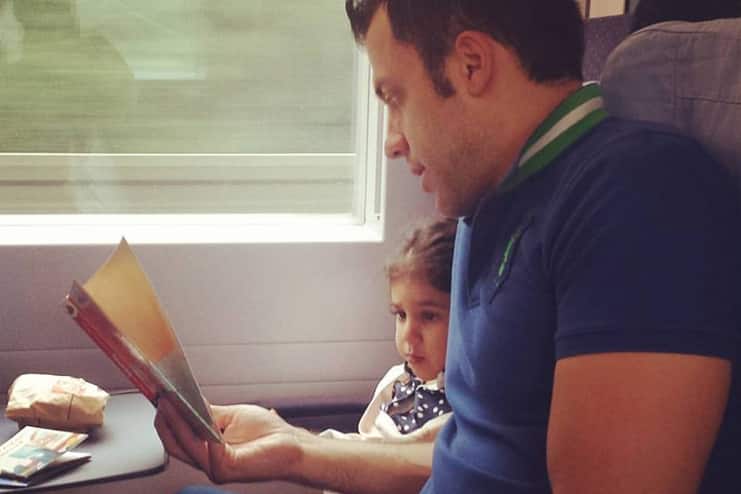Parenting is the art of growing the kids using intellectual and emotional techniques. Many parents may wish to raise their child as a multilingual in order to make them more adoptive and intellectual. But many parents may stuck to raise their parents as multilingual. Here you will find the ways that help you to make your child a multilingual.
Some families adopt the habit of being multilingual as a tradition. Parents want to enhance the intelligence levels of their child. There are plenty of reasons for raising a multilingual child.
This article discusses the benefits of raising a multilingual child. It presents the ways to raise a multilingual child.
Multilingual Child:

Multilingualism is the ability of the individual to communicate effectively in many languages. The child who speaks many languages is known as polyglot.
The language that which child grows up speaking is known as the the first language or the mother language. A child who is raised speaking the two first languages is known as simultaneous bilingual. The kid who come to learn the second language later is known as sequential bilingual child. In recent days, parents are intended to raise their child in the multi linguistic environment.
Pros and Cons of Raising Multilingual Child:

Raising a multilingual child benefits the child, family members and the community.
Here are a few benefits of raising a multilingual child:
1. Better academic results:
Multilingual child can have better concentration levels and they can achieve good results in their academics. They are known to have good problem solving skills, and multitasking skills. They have the ability to understand the language structure better.
They can benefit from more diverse and better career options.
2. Builds identity for your child:
Child who speaks more than one language has better identity in the social environment. They can adopt easily to the varied cultures. These children can have more self confidence.
It helps in boosting and enhancing the identity of the family.
3. They get a chance to appreciate the art of various languages:
When children know more than one language. They can listen to the music or watch the movies of various languages. This offers them best opportunity to learn about different cultures, literature and many other things.
4. Multilingual kid can build better network:
Multilingual kids can easily connect with the other kids, people of different cultures or regions. So that the kids can have a wide social network which improves their self confidence.
5. It offers them a wide career options:
Multilingual child can easily travel and work in different countries once they grow up. This avoids the risk of trying to learn the languages when they are grown. Multilingualism increases the scope of better employment in your child.
Here Are a Few Cons of Raising a Multilingual Child:
1. Your child Starts speaking fluently later:
A child who speaks more than one language from the childhood takes some time to achieve fluency in mother language when compared to other kids. You need not to worry about the lack of fluency in your child. They will need a few more time as they are exposed to different languages at the same time.
2. Your child may mix the languages:
It is more common for the multilingual child to mix the languages. It is not at all a concerning issue. They can speak clearly if they get clear understanding of the vocabulary in the each language.
3. More efforts are required from your side:
As your child is being introduced to a completely new thing, it is your responsibility to adopt flexible strategies and the techniques to make your child more comfortable. So, raising a multilingual child requires a lot of efforts from their parents.
How To Raise a Multilingual Child?

Childhood is the best time to teach your child multiple languages. Here are a few tips for raising a multilingual child.
1. Decide on the language system:
Decide on how many languages to teach your child. Discuss with your family members about the language system that who should speak what language to your child? The rule of one person one language works well to teach your child multiple languages. It makes your child to easily switch between the various languages.
You can also add any other foreign language to the language list of your child beyond what your family provides. This can be done by joining your child in the foreign language class.
2. Choose the best languages:
The prestige that the language holds in a particular territory plays an important role in the success of your child’s multilingualism.
3. Start early:
You need not wait till your child starts kindergarten. Look for the resources that help your child to learn multiple languages in more interactive and creative way. Children are more likely to learn the different languages between 3-6 years. After this age they do not show interest and lack in ability to pick different languages.
4. Build love for the language:
This is the best strategy for bringing up a multilingual child. Look for the ways that help your child to develop love towards the language. Writing is not the way to start with. Your child will learn to write effectively once they start their school. Adopt the more interactive ways to teach your child multiple languages.
5. Find some age appropriate books:
In order to make your child multilingual, the first step is to make them good at their mother language. Find the appropriate books with the more engaging activities. To increase the interest in your 1-3 years child use some story books, picture books, and flash books.
6. Get appropriate books:
Having books, music, movies, and toys in the minority languages is fun and useful way to make your child multilingual. Some of the other household items like mats, tableware, and posters are also helpful.
7. Make your expectations clear to your child:
It is essential to tell your child the benefits of learning many languages. This enhances the interest of your child towards learning. The learning becomes more effective if your child has the deep wish towards their goals. Never force your children to learn something they do not like.
8. Make the learning more consistent:
Navigate your child between two to three languages in the initial stages and make sure that the consistency is not spoiled. Maintain the balance between the languages that you teach your child while going further.
9. Make the learning fun and creative:
Children require zeal and patience to learn more languages. There are creative, fun and interactive ways to follow. Plan some activities in your home that help your child to learn the things fast. Adopt some traditions and strategies to enhance the multilingual skills of your child.
10. Be flexible with your goals:
Best language strategy is not enough all the time. Make yourself ready to face the challenges. It is essential to make yourself flexible to deal with the situations that you might encounter. The most difficult conditions include divorce or loss of a family member.
11. Talk to other families:
Talk to other families who have adopted the strategies of bilingual and multilingual and compare your strategies with them. Make your child to interact with those family which acts as a catalyst for your kid to learn multiple languages.
Be active on the social networks. Many parents discuss their challenges while raising a multilingual child and get the solutions from different communities that are active on social media. Be a part of the social media communities that raise multilingual children.
12. Give family time priority:
Family time offers your child the more comforting atmosphere to overcome many hurdles and come up with the smart ideas. Get your child to learn and practice some social cues.
13. Readjust the framework as per the abilities of your child:
The abilities vary from one child to another child and you need to reframe or adjust your strategies as per the abilities of your child. The best thing you can do to reframe your ideas is to interact with you child and know the difficulties that they are facing.
14. Establish a proper support network:
Get support from the other family members to make your child multilingual. Allow your child to interact with the different play groups. This is the best exercise that helps your kid to learn various cultures and languages.
15. Have yourself patience:
Raising a multilingual child require a lot of patience. Don’t get angry or frustrated towards your child who lacks in communication skills. Never compare or show another kid as a example. There are chances that they might treat it as insult.
16. Teach the stories in different language at bedtime:
These days kids are sleeping with their screens. Keep the screens away and make the bedtime more active by telling them different kind of stories. Make the activity as simple as possible. Do not make your child to feel it as a complicated activity.
Do’s and Dont’s of Raising a Multilingual Child:
Teaching your child best languages below the age of 5 years is the best time. Here are a few things that you should keep in mind while making your child multilingual:
Do’s :
● Implement the more interactive ways like videos, flash cards, story books, songs, and games that make learning more fun and creative
● Use sound as the basic element of teaching language. Let them to hear the languages.
● Create a routine to teach your child language that you and your family members stick to it.
● Help your child to find the opportunities to develop skills and acquire language.
Don’ts:
- Don’t expect perfection from your child.
- Don’t keep any targets and make learning stressful.
- Don’t push your child to achieve things fast.
- Don’t point if your child is mixing all the languages. It is quite common in the initial parts of learning for the children.
In conclusion, It is more necessary to introduce different language to your child to make them survive in this competitive world. Choose the list of languages and help your child to become a multilingual.










































